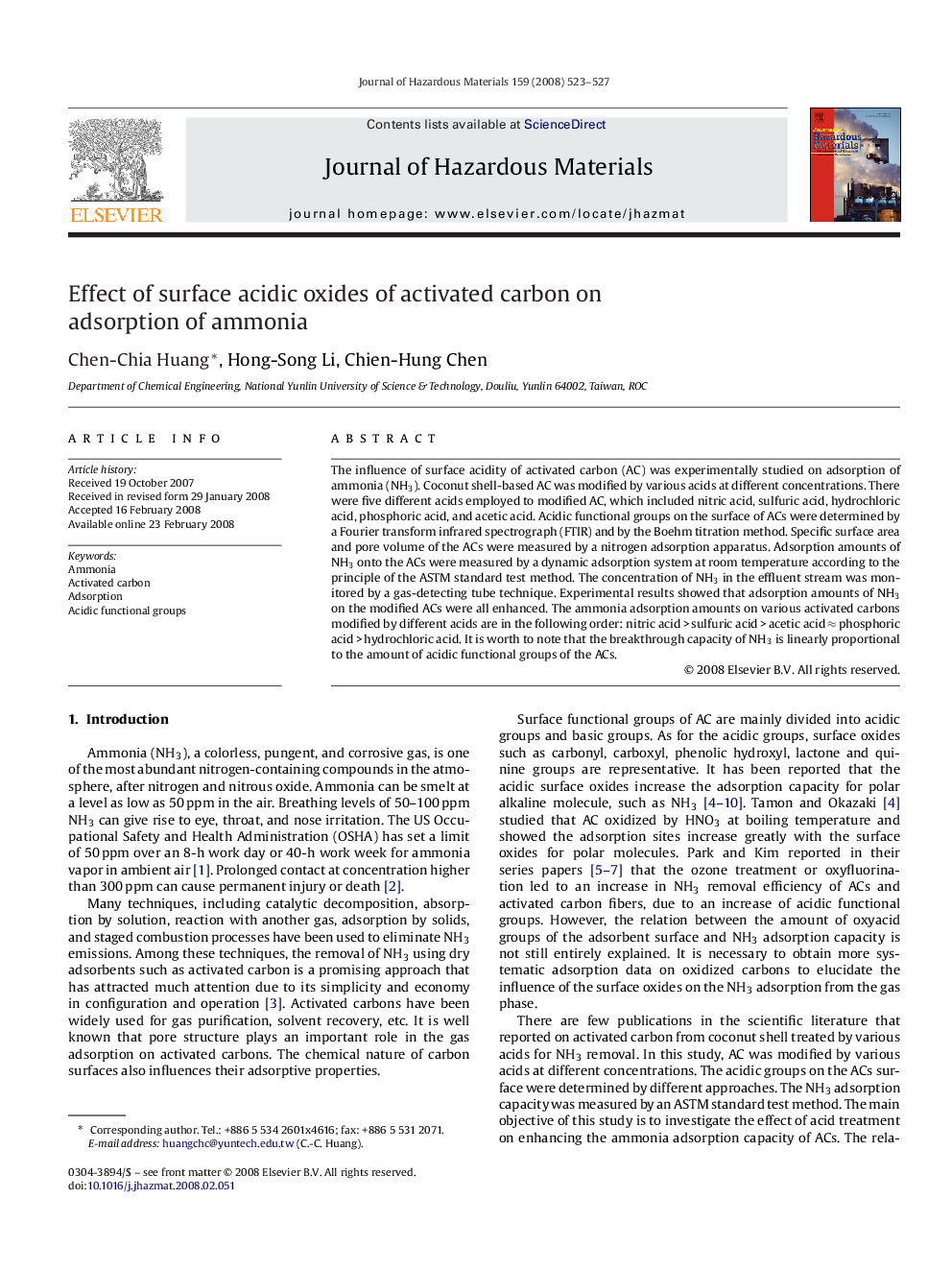| Article ID | Journal | Published Year | Pages | File Type |
|---|---|---|---|---|
| 583000 | Journal of Hazardous Materials | 2008 | 5 Pages |
Abstract
The influence of surface acidity of activated carbon (AC) was experimentally studied on adsorption of ammonia (NH3). Coconut shell-based AC was modified by various acids at different concentrations. There were five different acids employed to modified AC, which included nitric acid, sulfuric acid, hydrochloric acid, phosphoric acid, and acetic acid. Acidic functional groups on the surface of ACs were determined by a Fourier transform infrared spectrograph (FTIR) and by the Boehm titration method. Specific surface area and pore volume of the ACs were measured by a nitrogen adsorption apparatus. Adsorption amounts of NH3 onto the ACs were measured by a dynamic adsorption system at room temperature according to the principle of the ASTM standard test method. The concentration of NH3 in the effluent stream was monitored by a gas-detecting tube technique. Experimental results showed that adsorption amounts of NH3 on the modified ACs were all enhanced. The ammonia adsorption amounts on various activated carbons modified by different acids are in the following order: nitric acid > sulfuric acid > acetic acid â phosphoric acid > hydrochloric acid. It is worth to note that the breakthrough capacity of NH3 is linearly proportional to the amount of acidic functional groups of the ACs.
Related Topics
Physical Sciences and Engineering
Chemical Engineering
Chemical Health and Safety
Authors
Chen-Chia Huang, Hong-Song Li, Chien-Hung Chen,
